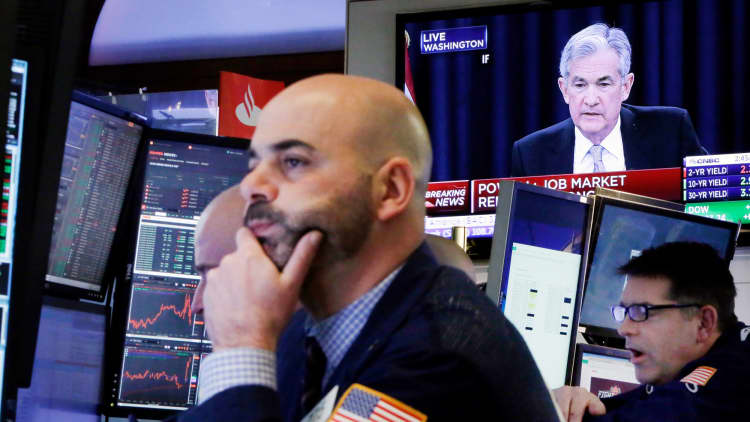There were multiple reasons for the big market sell-off this week, from rising rates to tariff fears to the lack of corporate stock buybacks.
On Wednesday, the Dow Jones Industrial Average declined by more than 800 points and the S&P fell by 3.3 percent, while the Nasdaq Composite plunged by about 4 percent. Stocks traded slightly higher on Thursday, but traders still expected more volatility ahead.
1) Rising interest rates
The primary factor was worry about the negative effects from the rising interest rate environment, which may slow the economy due to higher corporate and consumer borrowing costs.
Last week, Federal Reserve Chairman Jerome Powell said the central bank is a "long way" from getting rates to neutral in an interview with PBS, which pointed to a possible more aggressive path for rate hikes.
Those remarks sent bond yields higher with the benchmark U.S. 10-year Treasury note yield reaching levels not seen in years. On Tuesday, the 10-year note yield traded above 3.25 percent, hitting its highest level since 2011.
The rise in yields also makes higher equity valuation multiples less attractive because investors use U.S. government bond yields as their "risk-free" discount rate in financial models to value stock investments.
2) Tariffs and profit margins
Another major concern is corporate profitability. Goldman Sachs' David Kostin said his firm's wage survey leading indicator is at 3.3 percent, its highest level during this economic cycle.
"Labor costs will continue to rise and put downward pressure on the margins of many companies," Kostin said in a note Friday.
Kostin also warned about the potential negative impact from President Donald Trump's trade war with China. The White House's latest tariffs of 10 percent on $200 billion of imports from China took effect in late September. Trump, in a Sept. 17 statement, said the tariffs would rise to 25 percent on Jan. 1.
"The aggregate impact of tariffs on S&P 500 profits will depend on the specific rate and scope of products covered," he said. "If a 25% tariff is placed on all imports from China, our estimate of 2019 S&P 500 EPS, currently $170, could fall as low as $159, eliminating all expected earnings growth."
3) Corporate stock buybacks "blackout" period
In an Oct. 4 report, Goldman Sachs estimated S&P 500 companies will spend $770 billion for stock buybacks this year, up 44 percent from last year, which is a major boon for stock prices.
But this week's market decline is happening during a time when most companies do not buy back stock. Companies want to avoid any insider trading issues while they possess nonpublic financial information.
Raymond James has said most publicly traded companies have a policy to avoid share buybacks during the "blackout" period, which begins two weeks prior to quarter-end through two days after the earnings release.
WATCH: Five market experts break down how to invest as interest rates spike



